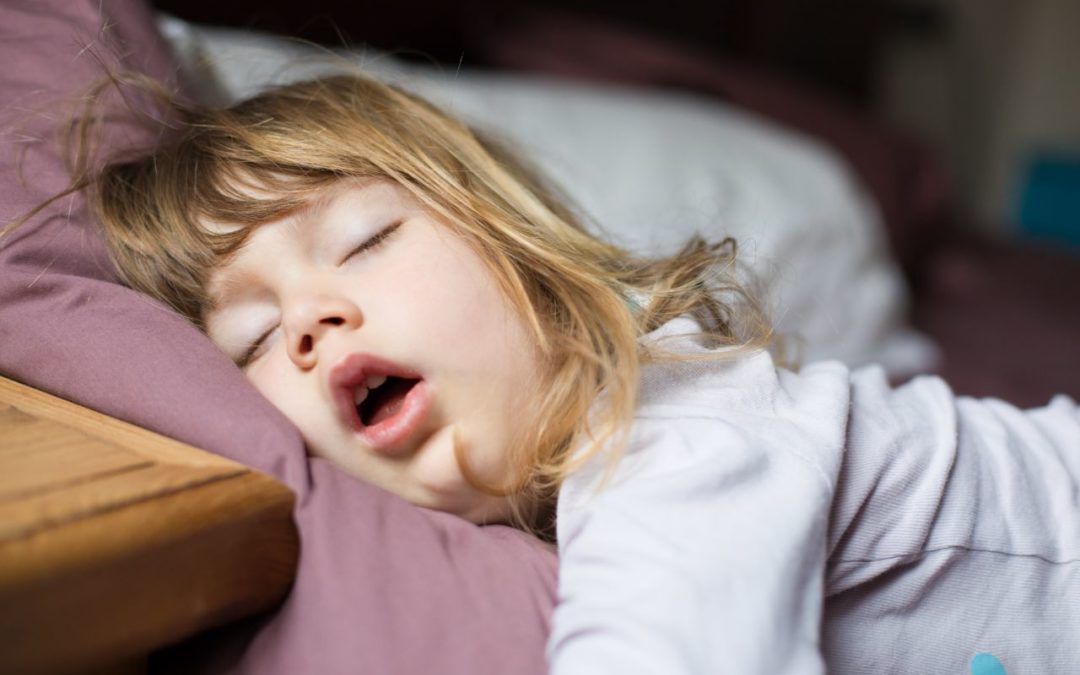What’s So Bad About Mouth Breathing in Children?
What does it mean to be a mouth breather exactly? We’ve all had occasion to breathe through our mouths instead of our noses. Any time we are ill and have congestion in our nasal passages, opening our mouths to continue the necessary body function of breathing is natural, automatic, and often unconsciously done.
Mouth breathing in children has been linked to various issues with jaw formation and tooth decay. Studies have shown that excessive mouth breathing can have a negative impact on your physical and oral health.
- Facial Development and Growth – In September of 2010, a study was published in the medical journal the Laryngoscope that studied the dental and craniofacial development in children both mouth breathers, and nasal breathers. The findings were convincing that mouth breathing has a negative impact on children’s growth development.
In their conclusions they stated clearly:
“Naso‐respiratory obstruction with mouth breathing during critical growth periods in children has a higher tendency for clockwise rotation of the growing mandible, with a disproportionate increase in anterior lower vertical face height and decreased posterior facial height.”
- Dry Mouth – Other studies have linked mouth breathing to halitosis in children which indeed makes sense from a logical perspective. Dry mouth is a problem that not only can cause halitosis but affects your saliva production. As we’ve discussed before, saliva is a powerhouse defensive line in your mouth to fight the plaque and bacteria that settle in and around the grooves of your teeth and gum line. Not having enough saliva production weakens that defense and therefore can lead to increased risk of tooth decay, gingivitis, and halitosis.
- Visible Physical Character Traits – This study found that children who were mouth breathers exhibited physical characteristics such as, “ elongated face, dropped eyes, dark spots underneath the eyes, narrow nostrils, inadequate lip sealing, dry and hypotonic lips, narrow upper lip (thin), anterior open bite and high palate.”
Is My Child a Mouth Breather?
If you watch your child throughout the day, take a note of whether they breathe through their mouth or their nose. Illnesses aside, they should be breathing through their noses most of the time.
- Does your child snore? Snoring is an indication that your child is breathing through their mouth while sleeping. Occasional snoring may not seem like a big deal, but excessive snoring can impact the quality of sleep your child is able to experience and can cause fatigue and drowsiness during the day when they want to be alert and active.
- Does your child have bad breath? Bad breath can also be an indication of mouth breathing.
Advantages of Breathing Through the Nose
There are numerous definitive advantages to breathing through the nose. Let’s look at some of them:
- Breathing through your nose has the benefit that when the air passes through your nose it is warmed and moistened.
- Your nose has hairs and mucous that help filter the air you breathe.
- Your nasal sinuses have the enzymes that create nitric oxide gas which mixes with the air you breathe and increases the capacity your lungs have for absorbing oxygen.
- Allows correct positioning of the tongue which helps the proper natural formation of your dental arches and teeth.
There are even more benefits to nasal breathing! To learn about these benefits more in depth, and learn about others not listed here, you can read a clinical review by following this link.
How Can I Help My Child (or Myself) Stop Mouth Breathing?
If you’ve identified your child or yourself as a mouth breather, there are some things you can do to work to change the habit and convert yourselves to nasal breathers.
- Be Conscious – Being aware of it, is a very good start. When you realize that you are breathing with your mouth open, close it! Consciously close your mouth and begin breathing through your nose. Take a few conscious breaths through your nose before going back to what you were doing. Be light and almost playful when you point this out to your child. By drawing their attention to it, you can practice some breaths through the nose together and then move along. You may even find that they will point out when they catch you breathing with your mouth open!
- Clear the Nose – Is your child breathing through their mouth because they are congested? If your child is congested, try utilizing a vapor rub on their chest, having them blow their nose (if old enough) or using a nasal aspirator to clear the blockage.
- Replace Air Filters – Most heating and cooling systems in your house use filters. Make sure that you are replacing those filters as recommended by the manufacturers. This will help with allergens in the air of your home which can contribute to nasal congestion.
- Have Fun with Scents – Have fun with scents in your home. Draw your child’s attention to the smell of a food, a scented candle or wax, or an air diffuser. Having them pay attention to smells will have them using their noses, and that encourages breathing through the nose.
- Yoga Exercises – Yoga exercises targeted for varying ages and levels of ability can be easily found on the internet. Yoga can be helpful because breathing is an important part of the poses and is done through the nose. The added benefit of relieving stress or tension is nice too!
Utah Pediatric Dentists
As always, we encourage you to instill habits of brushing teeth twice daily for two minutes and once a day flossing in your children. These dental hygiene routines are a huge piece of the prevention pie. If it’s been six months or longer since your child had a dental cleaning, give us a call to schedule a visit. We have offices in four locations. Choose the one nearest you and we will see you soon!

